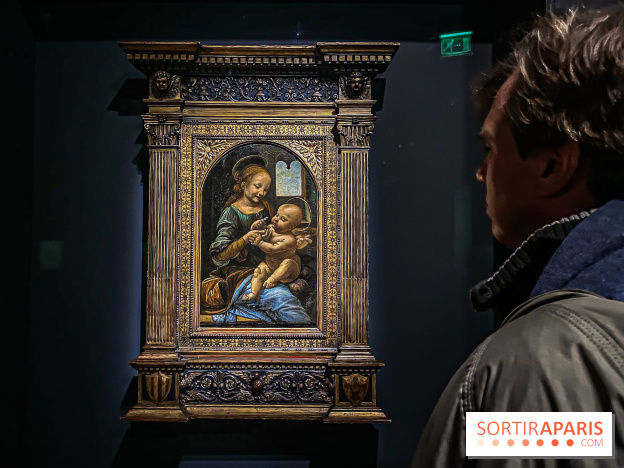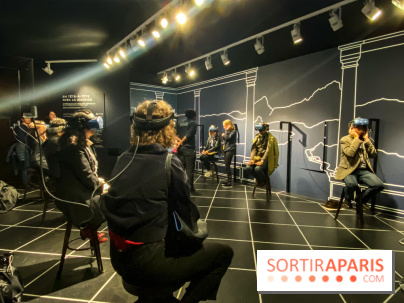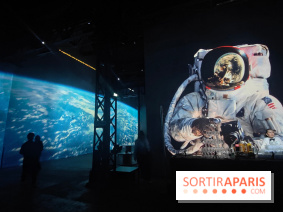The Musée du Louvre is devoting a major exhibition to Leonardo da Vinci to mark the 500th anniversary of his death in Amboise in 1519, an event not to be missed if you want to learn more about the genius!
Painter, scientist, philosopher, inventor, engineer - Leonardo da Vin ci was the epitome of the Renaissance, and his work continues to fascinate 500 years after his death. Yes, because only 15 paintings have survived to the present day, and the Musée du Louvre owns 5 paintings by Leonardo da Vin ci - La Vierge aux rochers, La Belle Ferronnière, La Joconde, La Vierge, l'Enfant Jésus et Sainte Anne et Saint Jean Baptiste.
In this regard, the president of the Louvre had slipped that he would like to "bring together as many of the master's paintings as possible" and "see the Salvator Mundi in Paris", the painting by the master sold for $450 million in November 2017. At the opening, the painting was not present at the Louvre, but the teams are not despairing of seeing it arrive. For consolation, we can discover the Salvator Mundi version Ganay, a painting identified by the Louvre as being by Marco d'Oggiono, a pupil of Vinci!
What makes this exhibition a must-see? Teams at the Louvre have been hard at work for 10 years, re-examining all archival documents to clarify Leonardo da Vinci's biography. They also carried out extensive infrared reflectography of Leonardo da Vinci's paintings to visualize the layers of carbon hidden by color pigments, revealing the manufacturing process of great masterpieces such as Mona Lisa.
So, while experts have always tended to divide his life into 6 key periods corresponding to his travels, the Louvre is proposing a new vision based on some of the lessons that Leonardo da Vin ci put into practice.
To this end, the Louvre has negotiated loans with the world's leading museums to bring together over 160 works by Leonardo da Vinci to support their new ideas. One example is Leonardo da Vinci's fragile "Vitruvian Man".
After an introduction reminding us of Lionardo di Ser Piero da Vinci 's youthful years in Florence, where he was a pupil of the sculptor Andrea del Verrocchio, the exhibition reveals when Leonardo da Vinci learned about movement and chiaroscuro, two notions that led the painter to "the idea that space and form are generated by light, and that they have no other reality than that of light and shadow".
Then, around 1478, the genius concludes from his teaching that "form is but an illusion that the world never ceases to tear away from itself", so we must accept a freedom of the hand and deny perfection impossible to find. Difficult as it may seem, Leonardo da Vinci embarked on a number of compositions in which black strokes are superimposed, as in La Madone au chat and La Madone aux fruits. The "uncultivated composition" - componimento inculto - thus launched the trend towards incompleteness.
In addition to his quasi-philosophical paintings, Leonardo da Vinci also used drawings to give an account of the world around him, and to present his thoughts and plans. The Codex Atlanticus, a collection of drawings and notes in 1,119 large-format sheets produced between 1478 and 1518, is often mentioned as a magnificent compendium of Leonardo da Vinci's studies on numerous hydraulic devices for transporting or pumping water.
In a beautiful room, under the gaze of the Last Supper, we can study over 30 fascinating scientific studies for the time, such as a study for church domes or the Euclidean demonstration of Pythagoras' Theorem, estimated at 1503-1507.
Leonardo da Vinci loved to depict the beauty of the world in paintings that became masterpieces for their hidden messages. His most famous masterpiece, the Mona Lisa, whose gaze is supposed to follow us for several meters.
But as crazy as it may sound, the Mon a Lisa isn't the star of the show, and isn't even (really) part of the exhibition. The Louvre chose not to move the masterpiece from the collections, especially as tourists come in droves to see it and know its room by heart.
We can console ourselves with the infrared study of the Study painting, but above all thanks to virtual reality! Yes, because the museum is innovating and offering us an experience during which Mona Lisa will reveal her secrets. We'll be able to observe the smallest details of this painting and contemplate it up close, a bluffing tête-à-tête, especially when we know the world of people who crowd into the Louvre to take pictures of her from afar.
It's an exhibition that blew our minds, and one we'd like to see!
Please note that it's been over 4 years since our last visit, so the place and experience may have changed.
Dates and Opening Time
From October 24, 2019 to February 24, 2020
Location
Louvre Museum
musée du louvre
75001 Paris 1
Access
Metro Palais Royal - Musée du Louvre
Official website
www.louvre.fr
More information
In view of the number of visitors expected, access to the exhibition will be subject to registration for specific time slots.







































